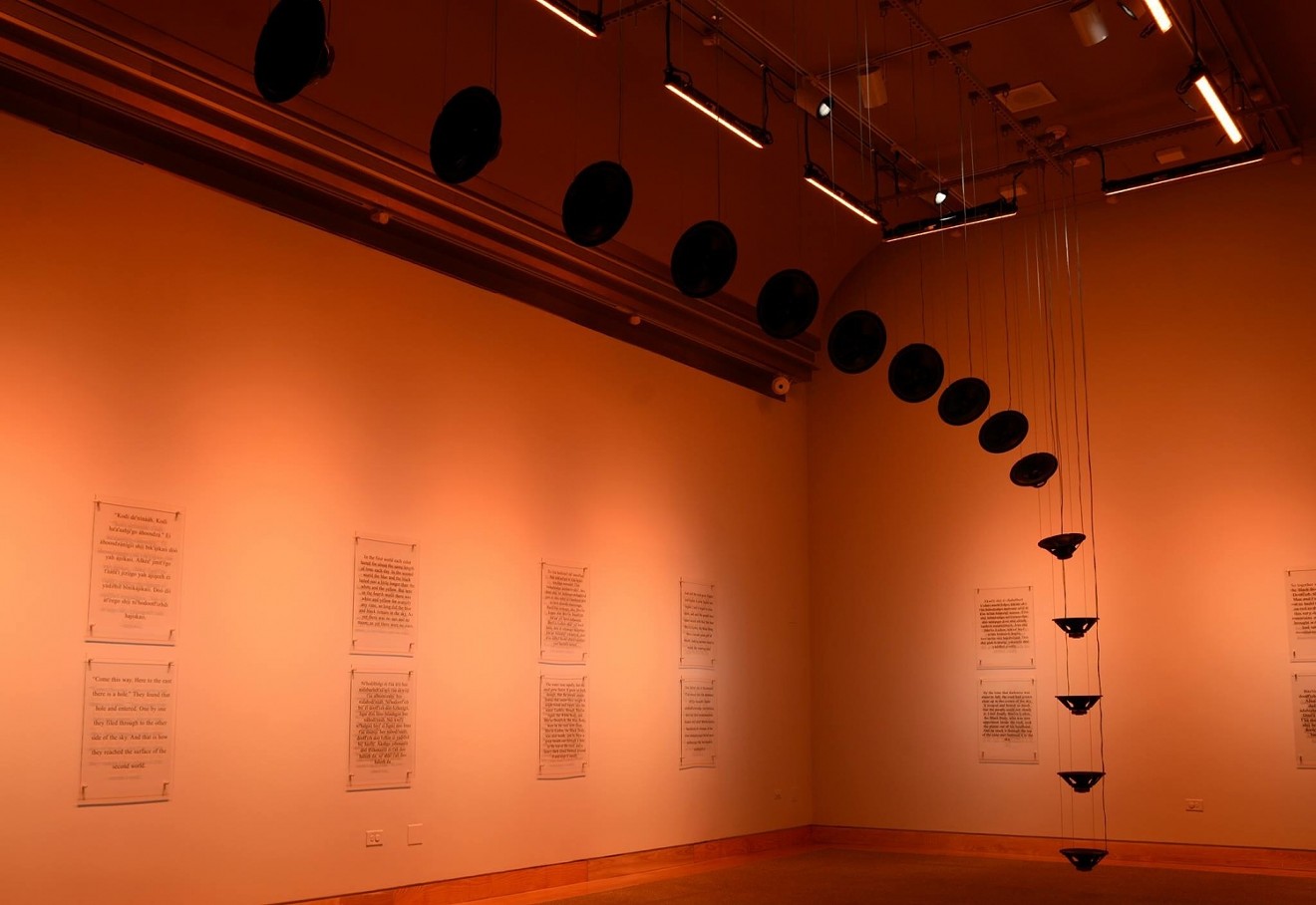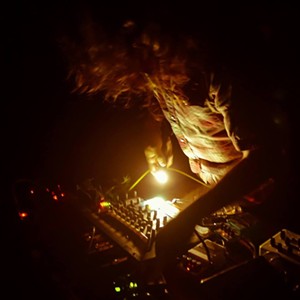Diné is the Navajo word for the Navajo people, by the way. And Dinétah is the Navajo word for their homeland. Today, it includes land in northeast Arizona, plus parts of New Mexico, Utah, and Colorado.
“I’m very happy to be presenting this work in Phoenix, because it’s in the vicinity of Dinétah and a lot of Navajo people live in Phoenix,” Chacon says. “It’s probably the biggest concentration of Navajos living off the reservation.” The artist is based in Albuquerque, New Mexico, as well as Toronto.
Chacon has deep roots in the Southwest, where he worked for nearly a decade with the artist collective Postcommodity. In 2015, the collective's temporary land art installation called Repellent Fence bisected a portion of the U.S.-Mexico border, signaling the artificial nature of boundaries that divide people on lands where migration has long been a way of life.
The collective was founded in 2007. Founding member Steve Yazzie had a solo exhibition titled "'Black White Blue Yellow" at the Heard Museum two years ago, and painted a monumental mural called Fear of a Red Planet for the museum back in 2000.
In 2017, Postcommodity’s video installation A Very Long Line was part of the Whitney Biennial exhibit in New York. Chacon left the collective last year, after deciding "it was time to switch it up." Now he's working on solo projects and other collaborations – including an opera called Sweet Land that’s premiering in Los Angeles in February 2020. He’s also collaborated with Arizona Opera and the Kronos Quartet.
Chacon’s Still Life No. 3, which is part of an ongoing series, will be on view at the Heard Museum from July 5 to November 3. It was previously installed at the National Museum of the American Indian in Washington, D.C., as part of the “Transformer: Native Art in Light and Sound” exhibit that closed in early January. That show also included work by Nicholas Galanin, who was featured at the Heard Museum last year.
“All of these still-life pieces are political in that they recognize the history of Native people, so no one should come into the space without recognizing that history,” Chacon says.
That history includes Fort Defiance on the Navajo Nation, where Chacon was born in 1977. Located in what’s now northern Arizona, near the Colorado border, Fort Defiance was home to thousands of Navajos forced to take the Long Walk to the Bosque Redondo internment camp during the 1860s, before being allowed to return several years later to a smaller section of their land.

Raven Chacon, Still Life #3, 2015 (detail). Sound and light installation with text. Voice and translation by Melvatha Chee. Collection of the artist.
Joshua Voda, National Museum of the American Indian
Inside the gallery, visitors will hear the voice of Melvatha Chee, a New Mexico-based linguist whose specialties include indigenous languages of North America.
“I’m telling the Navajo creation story through a series of overlapping and delayed voices, presenting the sound as if it’s in motion,” Chacon says. “A single voice moves in the space propelling itself forward, suggesting that time can repeat itself or be reiterated in a state of flux.”
The installation also includes light, with colors that reference various elements of the Navajo creation story. The color red, for example, can be the beginning or the end, the sunrise or the sunset. “The light represents different times of day, but also different worlds of emergence that the Navajo people have come through in the creation story.”
Still Life No. 3 is just the latest in a long list of Chacon’s creative forays in Phoenix. He’s played music at longtime staples of the local music scene, from Modified Arts to Trunk Space. In 2009, Postcommodity presented its Do You Remember When? installation at the ASU Art Museum, and the Worldview Manipulation Therapy installation at the Icehouse. In 2015, Scottsdale Museum of Contemporary Art presented "southwestNET: Postcommodity."
Now, Chacon is getting ready to open Still Life No. 3 at the Heard Museum, where sound and light will help visitors explore the idea that time isn’t always a linear experience and embrace art as something more than objects to be passively observed.
“Sound art provides an opportunity to listen and have that kind of reflection," he says, "instead of trying to view an object trapped in a vitrine."
Still Life No. 3 by Raven Chacon. July 5 to November 3. Heard Museum, Jacobson Gallery, 2301 North Central Avenue. Admission is $18. Free admission from 6 to 10 p.m. for First Friday, July 5. Free artist lecture at 1 p.m. on Saturday, July 6. Visit heard.org.













